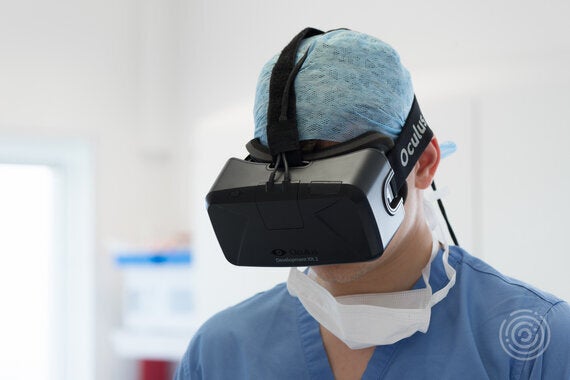IT analyst house IDC estimates that AR and VR will reach $162 billion in revenue by 2020, hitting critical mass in healthcare delivery, product design and management related use cases. Last month saw Oculus Rift launch in the UK and whilst the virtual reality headset has arrived with access to hundreds of gaming experiences, many are noting that the technology has opened up a wealth of opportunities in a number of fields including medicine. We're beginning to see examples of technology like Google cardboard being implemented in real life medical emergencies - doctors in Miami used the device, combined with CD imaging to map out intricate heart surgery, saving a baby's life.
There's still some confusion generally about the difference between AR and VR and the different uses. Augmented reality uses technology to superimpose information (such as images and sounds) on the world we see - it adds to normal reality. Whereas virtual reality creates a computer generated environment for the user to interact with and be fully immersed in - it replaces normal reality.
Critical procedures is one area that VR can impact, but another is training. Medical professionals have already seen how simulations can help teach highly technical procedures that doctors rarely perform, but need to know how to do well. Technology like virtual reality offers the potential for students to experience real-world clinical situations in a way that is more immersive than training or textbooks. But will it live up to the hype? And what is the benefit of VR vs. augmented reality (AR)?
Virtual reality has the potential to function as a tool to support planning surgical procedures. Currently, surgeons use preoperative imaging such as CT/ MRI scans to visualise structures, but VR could offer an opportunity to visualise 3D constructs of anatomy and pathology. In the case of removing a tumour, for example, the surgeon would be able to not only visualise it but also move around it to better understand relationships to local anatomical structures.
Secondly, VR could have a role to play in helping patients to better understand their condition, the location of a tumour or cancer and what a medical procedure could entail. This could go some way to demystify a surgical procedure for patients, giving them some reassurance by helping them to understand what is going to happen. This could have a benefit in making the patient feel less anxious ahead of an operation.

(Photo: Touch Surgery) Touch Surgery is leading the advance of surgery into virtual reality platforms including Oculus and zSpace.
We at Touch Surgery have used VR in the setting of visualisation of anatomy and pathology but more and more so our focus has become augmented reality and computer vision. Augmented reality offers Touch Surgery an opportunity to provide support for surgeons in the operating room (OR) which we find an exciting challenge.
Augmented reality could also enhance the surgical workflow (the various steps involved in performing a surgery) in the OR. An example of this could be that a surgeon, if needed, can dial in an expert for support. A telesupport example is the British doctor David Nott who is remotely directing life-saving operations in war torn Aleppo via Skype. Patient self-research might also save time for various health professionals and push hospitals to adopt this type of technology.
In my opinion virtual reality looks like a neat planning tool whilst augmented reality can potentially be used in the OR. AR has potential to support surgical workflow, patient safety and help create better patient outcomes. Ultimately both virtual and augmented reality offer a different way of consuming content and learning. But the technology is still expensive and developing content is challenging (particularly for AR), so it will take some time before it really impacts the everyday medical user.